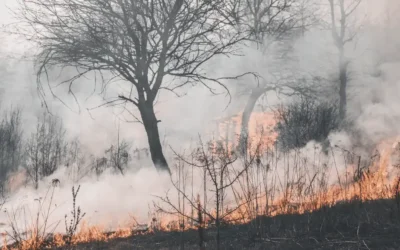Here at Conserv, one of our passions is to continuously acquire and share knowledge. We sent our CxO Sara Cannon to the Southeastern Museums Conference with that goal in mind. Here are three takeaways she came home with:
I can’t express how amazing SEMC was. Everyone there was so friendly and knowledgeable. I was able to deepen my understanding of conservation and the museum world. Here are a few of my takeaways:
All objects deserve professional conservation
In the talk “Conservation Isn’t only for the Getty”, Jennifer Bullock of Carolina Conservation touched on many points, but my main takeaway was the importance of conservation being done by a professional. From King Tut’s botched beard to the botched restoration of a fresco now referred to as “Monkey Jesus” , there are many “horror stories” of conservation gone wrong.
Conservators have a tough job. Not only do they need to do the hard restoration work, but they also have to make decisions about how to restore an object. If a wooden sculpture that shows some signs that it’s been painted, is it best to leave it unpainted? At what point do you take off previous restoration paint layers?
It’s a great idea to get the Collections Assessment for Preservation program to come and do an assessment of your museum. A CAP assessment is a study of an institution’s collections, buildings, and building systems, as well as its collections care policies and procedures. The assessment involves a site visit by collections and building assessors, who spend two days touring the museum and interviewing staff and governing officials. The assessors then prepare a comprehensive report that outlines recommendations for improving collections care. What a great way to build your conservation program.
Outdoor Conservation can be tricky
I attended the session “Conservation and Maintenance of Outdoor Sculpture Collections” by Claudio Chemello and Paul Mardikian of Terra Mare Conservation, Zinnia Willits of Gibbes Museum of Art, Maggie Jordan of North Charleston, and Robin Salmon of Brookgreen Gardens. In this session, I learned about the various challenges sculptures have in an outdoor environment. There are many elements that challenge materials:
- Chemical Pollution, gaseous and particulate
- Moisture – rain, fog, dew, incorrectly placed sprinkler systems, poor drainage, freeze-thaw cycles
- Salts – including from de-icing salts
- UV Radiation
- Erosive winds
- Natural disasters – climate change
- Graffiti, vandalism, public interaction, birds
Once a sculpture is outside, there needs to be an active preventative conservation plan put in place. I heard many case studies about outdoor works that were “forgotten about” making the active conservation of the object way more difficult and challenging. Stone can deteriorate too far and metal can corrode. In particular, fountains need an active conservation plan. If you have outdoor pieces in your collection, it’s time to make a plan if you do not have one.
Global Warming is already impacting collection conservation
The session “Climate Change and Southeastern Museums” was given by Darcie MacMahon of Florida Museum of Natural History, Roger Chang of DLR Group, Joel Hoffman of Vizcaya Museum and Gardens. The world is starting to see more natural disasters occurring as a result of climate change. Hurricanes, sea-level rise, wildfires, flooding, and temperature increases are increasingly affecting museums. Museums aren’t able to ignore climate change anymore. They need to have a plan how to protect their collections in the wake of natural disasters. Flood barriers, backup generators, and firewalls are just the beginning. Efficient and modular HVAC systems, environmental monitoring, and good building envelope performance is also needed. A good takeaway is that museums themselves should set up a plan to become carbon neutral.
A lot was learned at the Southeastern Museums Conference. I was able to dive deeper into collection care and conservation. If you have any thoughts about how Conserv can help you bring better care for your collection, contact me sara.cannon@conserv.io
If you have any questions about environmental monitoring, integrated pest management, or just want to talk about preventative conservation, please reach out to us! Don’t forget to check out our blog or join our community of collections care professionals where you can discuss hot topics, connect with other conservators or even take a course to get familiar with the Conserv platform.




